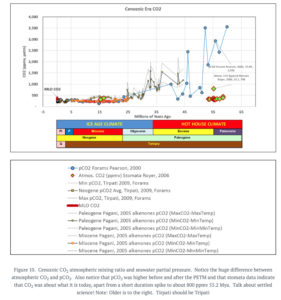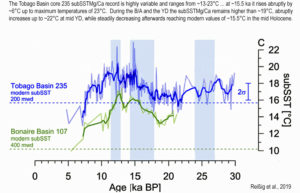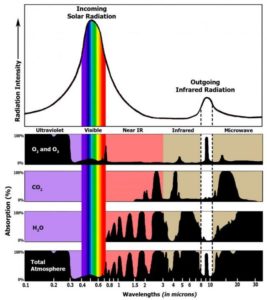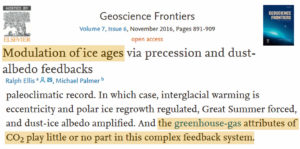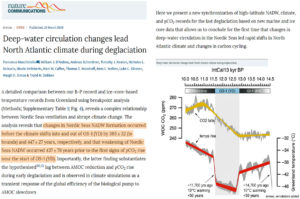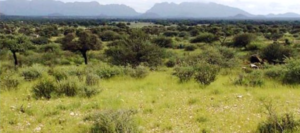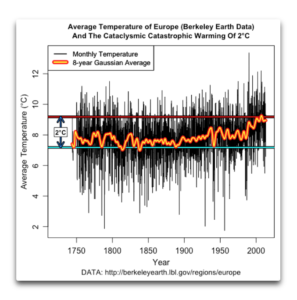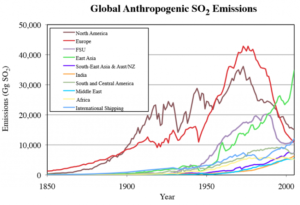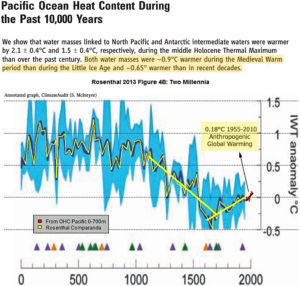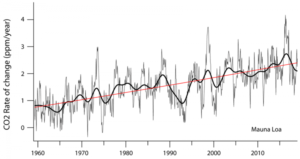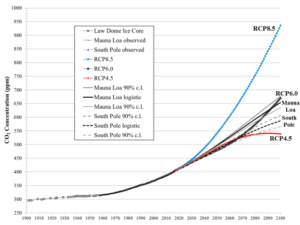by Dr. Daniela Mazza, May 18, 2019 in WUWT
Oceans cover about 71% of the earth surface, but their influence on climate change is not only due to high heat capacity of water , not only to the ocean’s water circulation, but to a fact which is widely underestimated : the pH (acidity level) of sea-water is substantially alkaline, ranging from 8.0 to 8.7 . This means that the balance between positive and negative ions is reached by accounting for OH– ,hydroxide ions, in a far larger amount in respect to H+ hydrogen ions.
The pH value higher than 7 allows seawater to dissolve and react huge amounts of CO2 , carbon dioxide, thus affecting the amount of this gas in the atmosphere by absorbing excess of it. To calculate this excess in respect to what would be the true equilibrium value in the air, all of the chemical reactions involved have to be simultaneously computed, accounting for their equilibrium constants, which in turn depend on temperature.
1 – CO2 (gas) + H2O <==> H2CO3* (H2CO3* is the sum of dissolved CO2 and H2CO3)
2 – H2CO3 <==> H+ + HCO3–
3 – HCO3– <==> H+ + CO3– –
4 – H2O <==> H+ + OH–
5 – Ca++ + CO3– – <==> CaCO3 (calcite)
6 – Ca++ + OH– <==> Ca(OH)+
7 – Mg++ + OH– <==> Mg(OH)+
…
Conclusions : CO2 is at 410 ppm far above the equilibrium value (315) , provided a standard seawater composition and an average ocean temperature of 17°C (taken from wikipedia). No doubt that solubility will force more CO2 to be stored in oceans . Moreover if we consider CaCO3 formation (seawater has overshot the solubility of this salt nearly 50 times but nucleation and growth are slow) still more CO2 will be stored by limestone.
